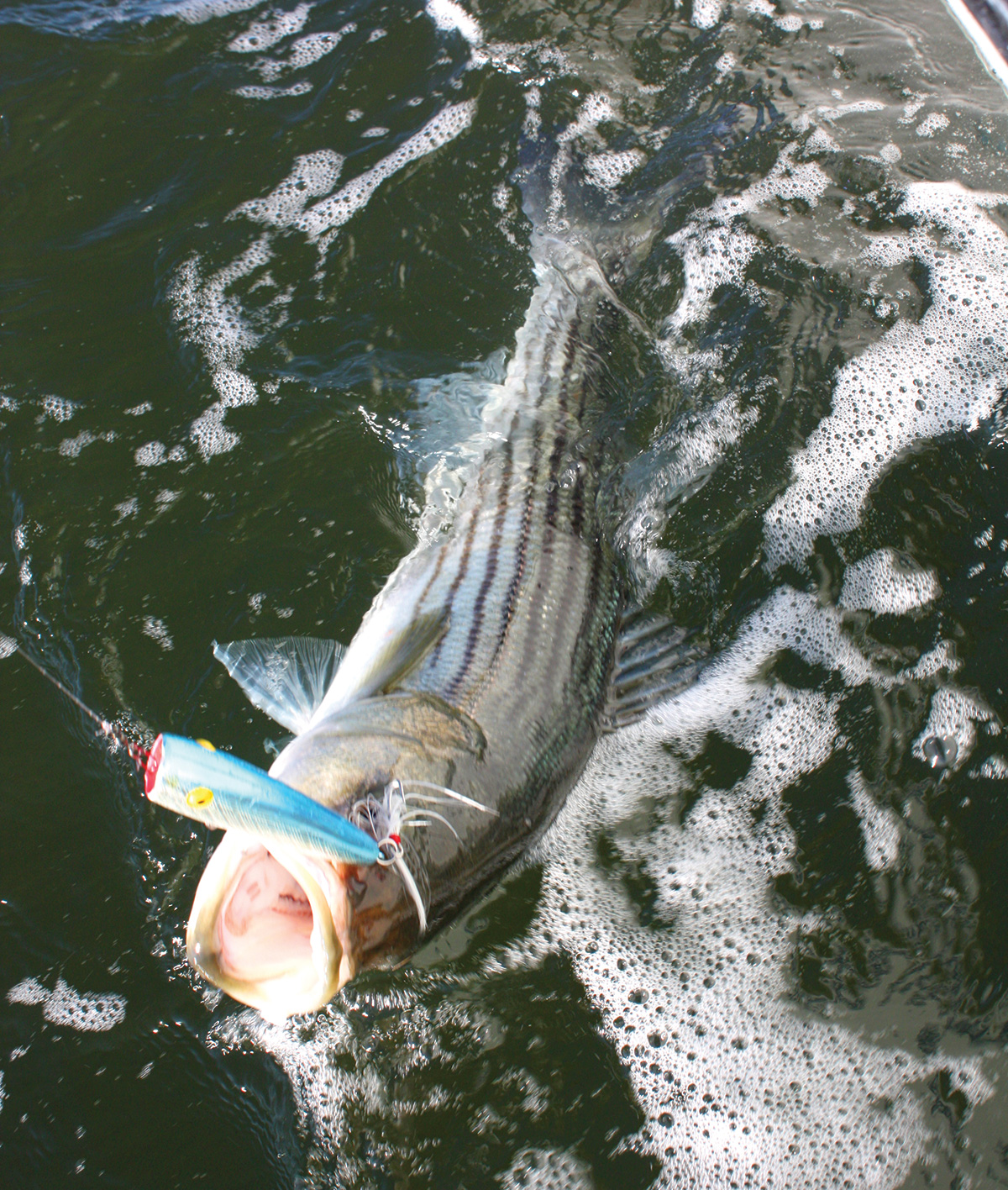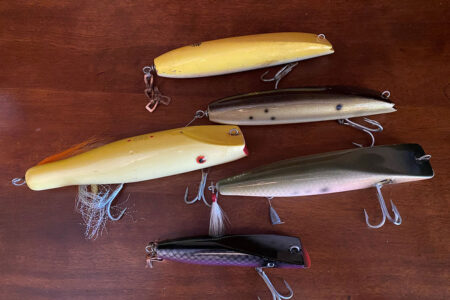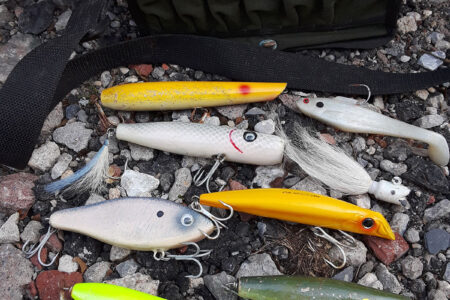
Don’t give up on those poppers at the end of the striped bass season.
As far as I’m concerned, there’s no substitute for the thrill of catching gamefish on poppers—and I’ll use that technique whenever possible. Yet, there’s a tendency to move toward jigs and sub-surface lures as waters cool, and surface action may not be as common with stripers and blues feeding deeper on sand eels and a variety of young-of-the year fish moving out to sea for the southerly migration. You may not always see stripers and blues late in the year, but if they’re around the tendency to react to surface noise is still there—and the strikes may be even more explosive in the cooler waters.

Late Inning Action
When I was chartering out of Point Pleasant and Brielle many years ago, late fall was my favorite time of year because I could find surface action almost every day. That applied not only during the prime migratory times in October and November, but also well into December. It seemed like every year I was fighting with whatever marina I was fishing out of to keep my Aquasport 28, Sheri Berri II, in the water just a little bit longer as they tried to close up for the winter. On one occasion I ran out of Manasquan Inlet at first light to throw poppers at blues and stripers before having to rush back to Hoffman’s Marina in Brielle before the absolute last hour deadline that morning for them to haul the boat before they left for Florida.
Those last trips are tough on the boat as marinas shut off water and make it as difficult as possible for the remaining boaters to continue operating. During those last few trips out of Hoffman’s I’d have to stop at the then-unmanned fuel dock when returning in the evening in order to get access to the only freshwater available for spraying down the boat and our tackle. If it was low tide, getting up on the dock was a challenge. Fortunately, my regular customer, Joe Blaze, is tall and could just barely hoist himself up to get to that hose.

Even when stripers and blues are feeding on sand eels, peanut bunker and other such small forage that call for use of such sub-surface lures as jigs, Tsunami sand eels and swim shads, it’s often possible to raise the gamefish with poppers for more sport even if the hook-ups are fewer. One of the joys of popper fishing is that even misses are exciting. Smaller poppers are a better bet under those circumstances.
The Herring Run
The later in the year it gets, the more likely it is that herring will begin appearing to provide a real treat for gamefish. Gannets dive bombing will give away the herring, but gannets aren’t a sure indicator of what we’re looking for. While gulls have to depend on predator fish to push baitfish to the surface for them, gannets can dive far down and capture their favorite prey without any help. Therefore, run to the mix of gannets and gulls working rather than just gannets diving.
There was a fine bite in late 2015 of big blues plus some stripers pushing herring to the surface off the Highlands Bridge that lasted well into December. The last day that year I fished with Mark Roy on his Century 31, Release Me, out of Raritan Marina in Hazlet was on December 12 as we were surrounded by birds diving and fish breaking. Roy, Fred Ciafrone and I raised fish after fish on the same large pencil poppers we’d used for cubera snappers and roosterfish in Panama. The choppers dominated, and were all jumbos with sagging bellies full of herring – but never satisfied and reluctant to leave cooling waters for their southerly migration while there was so much food available.

Though it was a Saturday, there was little competition at that time of year, and plenty of breaking fish to choose from even if another boat did run through some schools in order to jig or troll. You don’t have to be a great popper fisherman to catch fish under those circumstances, and the most valuable skill involves being able to cast to fish without hitting birds. Giving yourself room to cast sideways helps as the lure can be delivered close to the water rather than high into the mass of birds.
Have more fun with the blues and stripers you catch this fall by keeping one spinner rigged with a popper to use whenever the circumstances are right—and keep it handy right through December.
| ADJUST YOUR TREBLE |
|---|
|
Though it may make it more difficult to hook stripers, which tend to hit at the head of a lure, it’s safest to remove the belly trebles of plugs when bluefish are involved. It’s a lot easier to remove just a rear hook, preferably a single, and you’ll then also be able to grab the head of the lure to aid in lifting the fish aboard, especially when releasing. Use 60-pound leaders as there’s no advantage involved in using light leaders with poppers, and you’ll prevent losing some expensive poppers to the sharp teeth of blues you’ve hooked or those of others trying to get at the lure. |




